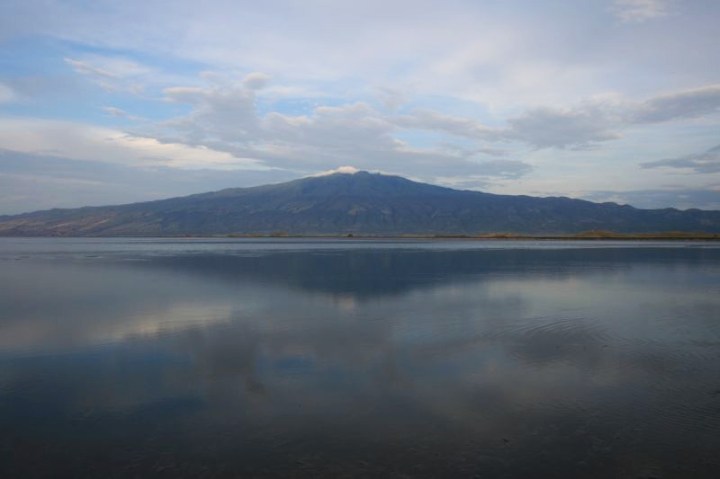Africa
Tanzania’s flamingos highlight Africa’s development dilemma

In the placid waters of Lake Natron, three-quarters of the world’s endangered lesser flamingos relax enough to make some babies – an essential requirement for the continuation of the species. Tanzania’s plans for a giant soda ash plant on the shores of the lake will shatter this tranquillity, but put a lot of money in government coffers. SIMON ALLISON ponders Tanzania’s dilemma.
At first glance, Tanzania’s Lake Natron soda ash project is a winner. It provides money to a country that needs it desperately. It will provide plenty of jobs for the local population. And it will help develop Tanzania’s stagnant industrial sector.
Lake Natron is unusual in its proximity to an active volcano. Not just any active volcano, but the only volcano in the world whose molten lava is made up of a rock called natrocarbonatite. Ash from the burnt natrocarbonatite settles in Lake Natron. In this form, it’s known as soda ash, and is a water softening agent in laundry detergents and used to make some types of glass. Lake Natron is believed to have the largest deposits of soda ash in the world.
Tanzanian officials are excited about the planned soda ash plant which will extract the precious mineral from the lake. “We expect it’ll raise the standard of living of the people here and create jobs and support social services – education and health,” said the executive director of Longido district, where the plant will be situated. Tanzania’s President Jakaya Kikwete is also a firm supporter of the project, saying it will provide a big boost to the economy and wants to fast-track it.
But there’s a problem. Something about Lake Natron’s caustic waters makes it the ideal breeding grounds for the endangered lesser flamingo. Three-quarters of them breed here, laying their eggs on the mounds of mud which they form on the lake’s salt pans. And the construction of a giant processing plant is going to be a problem for the notoriously skittish flamingos. “All [of East Africa’s lesser flamingo population] depend on Tanzania’s Lake Natron as a breeding site. Food is plentiful, nesting sites abound and above all, the lake is isolated and undisturbed,” said the Royal Society for the Preservation of Birds. “It takes very little disturbance to cause an entire breeding colony to abandon its nests.”
The implications of this are straightforward. If Tanzania proceeds with its soda ash plant, it risks pushing the lesser flamingo to extinction. If it chooses to protect the birds, then it loses a potential stimulant for its ailing economy. It’s a debate Africa faces often: what comes first, development or the environment?
Tanzania has some form on this issue. Last year the government approved a plan to build a two-lane highway linking the cities of Arusha and Musoma. Only problem? The highway cut straight through the Serengeti National Park, blocking the wildebeest migration path. East Africa’s annual wildebeest migration is one of the last remaining mass migrations on Earth, and plays an important role in maintaining the Serengeti’s entire ecosystem – not to mention enormous revenues from tourism. After immense pressure, Tanzania finally abandoned the plans, perhaps realising that the economic benefits of linking the two cities (which could have been substantial) would be outweighed by the potential losses in tourist revenue if the Serengeti collapsed.
Both incidents highlight the tension that exists between industrialisation and conservation in Africa. This century’s focus on environmental issues means Africa comes in for intense criticism whenever it tries to take shortcuts of the kind that that spurred the development of the western economies and China. It’s an issue that is particularly contentious around climate change negotiations, where African countries are understandably unhappy about having to implement strict climate restrictions when it emits a fraction of the world’s carbon emissions; expect this to come to a head at COP17, the international climate change conference in Durban later this year.
In the meantime, East Africa’s lesser flamingos go about their business with no idea that their survival comes down to human political considerations and economic imperatives. But given their inability to produce cold, hard cash for a Tanzanian government which needs it badly, maybe they don’t have financial clout of tens of thousands of wildebeest – which means … DM
Read more:
- Planned Tanzania soda ash plant threatens flamingoes on Kenya’s Capital Radio via AFP;
- Tanzania’s Serengeti National Park facing ‘collapse’ due to highway plans in the Telegraph.
Photo: REUTERS


















 Become an Insider
Become an Insider